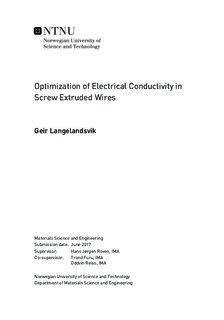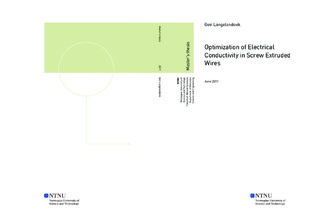| dc.description.abstract | The novel production method of screw extrusion was used to produce an electrical conducting wire of commercial pure aluminium. To optimize electrical properties, effects of impurity atoms in solid solution were examined by resistance measurements and microstructural analysis in LOM, SEM and TEM.
Performed actions revealed precipitation of iron to be a major contributor to increasing electrical conductivity in aluminium. Precipitation kinetics, summarized in a newly assessed TTT-diagram, showed the most rapid precipitation around 450 degree Celcius. The produced screw extruded wire had a fine sub-grain structure arising from repeated deformation, recrystallization and concurrent precipitation during extrusion. The final product performed very well in terms of ultimate tensile strength and electrical conductivity; 61 MPa and 64.30 %IACS, respectively. Tempering after screw extrusion resulted in a decreased conductivity, but a slight enhancement of the tensile strength. | |

